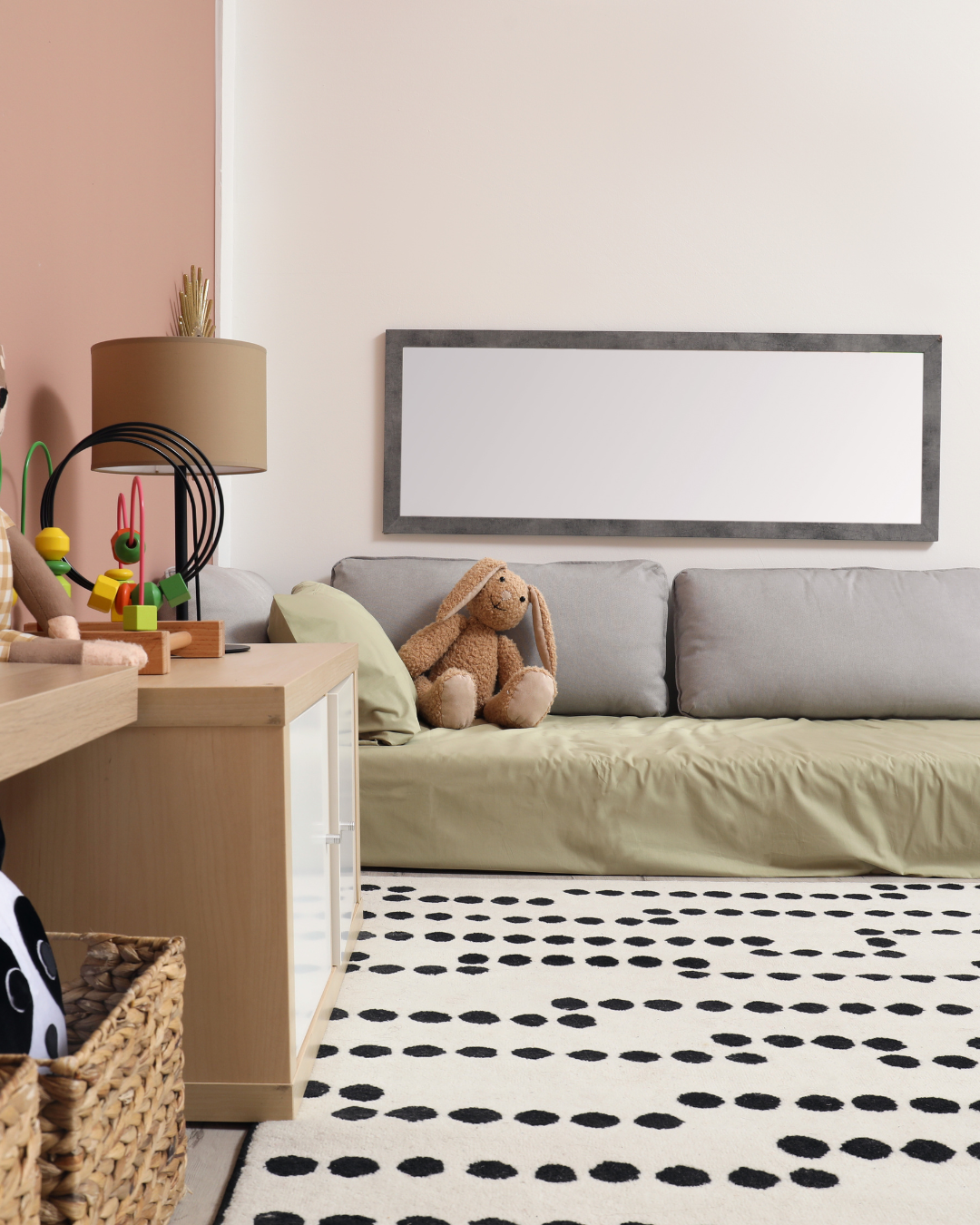As more families embrace Montessori-inspired parenting, floor beds have become a popular choice for babies and toddlers.
But here’s the thing: while floor beds have benefits, they also come with important safety considerations, especially when it comes to how you set them up.
One of the most common mistakes I see is placing a mattress directly on the floor. It seems simple and budget-friendly, but this setup can create hidden risks for your child’s health and safety.
In this post, we’ll cover:
-
Why families choose floor beds
-
The risk of putting a mattress directly on the floor
-
How to set up a safe floor bed for your child
Why Families Choose Floor Beds
Floor beds are often inspired by the Montessori method, which values independence and child-led development. Instead of being in a crib, your child can get in and out of bed on their own.
Here are a couple of reasons families lean towards floor beds:
-
Encourages independence – Toddlers can go to bed and get up without needing a parent to lift them.
-
Fits some family sleep setups better – Depending on your space and parenting style, a floor bed may be more practical than a crib.
Note: If your child is under 18 months, a crib is still the safest choice. Floor beds are best suited for older toddlers who can safely navigate their space.
Why a Mattress Directly on the Floor Isn’t Safe

I often see recommendations to just “throw a mattress on the floor” and call it a day. While it might seem fine short-term, this can lead to issues over time:
1. Moisture Buildup and Mold
-
Airflow under the mattress is crucial.
-
When a mattress sits flat on the floor, moisture gets trapped underneath from body heat, spills, or even condensation.
-
This creates the perfect environment for mold, mildew, and bacteria, which can affect your child’s health and trigger allergies or respiratory issues.
Pro Tip: If lifting the mattress daily isn’t realistic, use a low-profile slatted base to promote airflow.
2. Temperature Regulation
-
Without ventilation, mattresses can trap heat and sweat, making your child’s sleep space uncomfortable.
-
This can lead to night wakings and disrupted sleep.
How to Safely Set Up a Floor Bed
Here’s how to create a safe, clean, and supportive floor bed environment for your baby or toddler:
1. Choose the Right Mattress
-
Use a firm, breathable mattress that meets infant and toddler safety standards.
-
Avoid pillow-top or overly soft mattresses that increase suffocation risk.
2. Elevate the Mattress
-
The safest option is to place the mattress on a slatted base or low-profile bed frame to allow for proper airflow.
-
If you must place the mattress directly on the floor, lift it up every day to dry out and prevent moisture buildup.
3. Clear the Surrounding Area
-
Keep at least three feet of clearance around the bed.
-
Remove cords, curtains, and furniture that could pose a hazard.
-
Think of the entire room as your child’s safe sleep space, not just the bed itself.
4. Baby Proof the Room
-
The room should be fully baby-proofed since your child will have the freedom to move around.
-
Consider keeping the bedroom door closed after your child is asleep so they don’t wander unsupervised at night.
-
Teach your toddler to call for you if they need help during the night rather than leaving their room alone.
5. Follow Safe Sleep Guidelines
-
Under 12 months: Babies should still sleep in a crib or bassinet, flat on their back, with no loose bedding or items in the sleep space.
-
12–18 months: A sleep sack is safer than a blanket to keep your child warm.
-
18 months and older: A small, lightweight blanket can be introduced once your child can move and roll freely.
-
Anchor heavy furniture like dressers and bookshelves securely to the wall to prevent tipping accidents.
Final Thoughts
Floor beds may be a good option for some families, but only if they’re set up safely and thoughtfully.
Remember:
-
A mattress directly on the floor may seem simple, but it can trap moisture and grow mold.
-
Always prioritize airflow and ventilation by using a slatted base or lifting the mattress regularly.
-
Baby-proof the entire room as carefully as you would a crib.
With the right setup, a floor bed can support your child’s independence while giving you peace of mind that they’re sleeping safely.
If you’re still on the fence about switching your child to a floor bed, book a free sleep evaluation call with our team and we can help guide you based on your family’s sleep goals!
Rosalie Kassen
Founder of Plume Sleep
Certified Sleep Consultant
